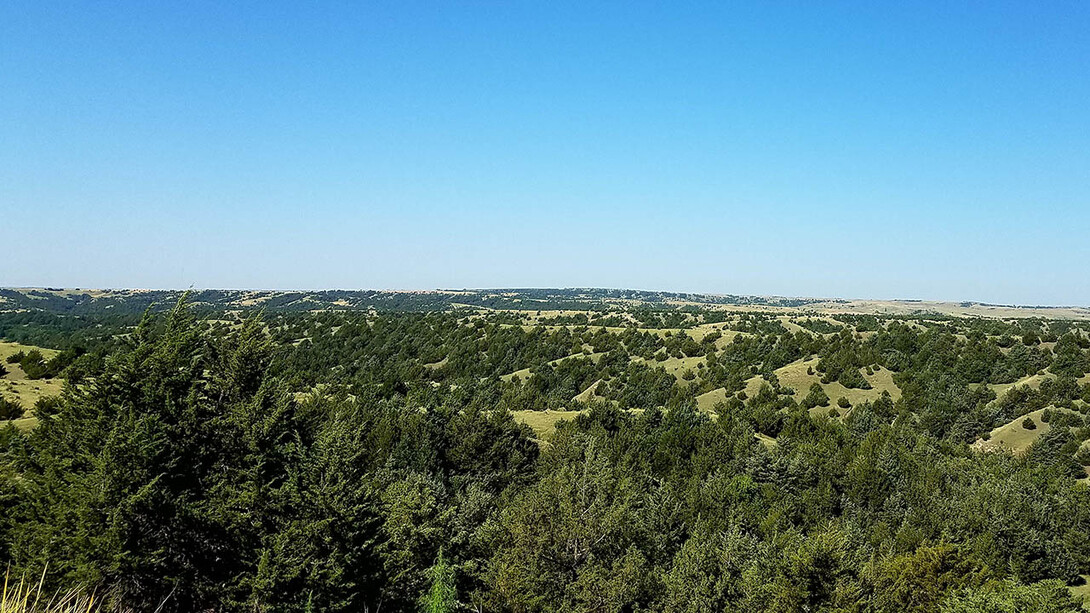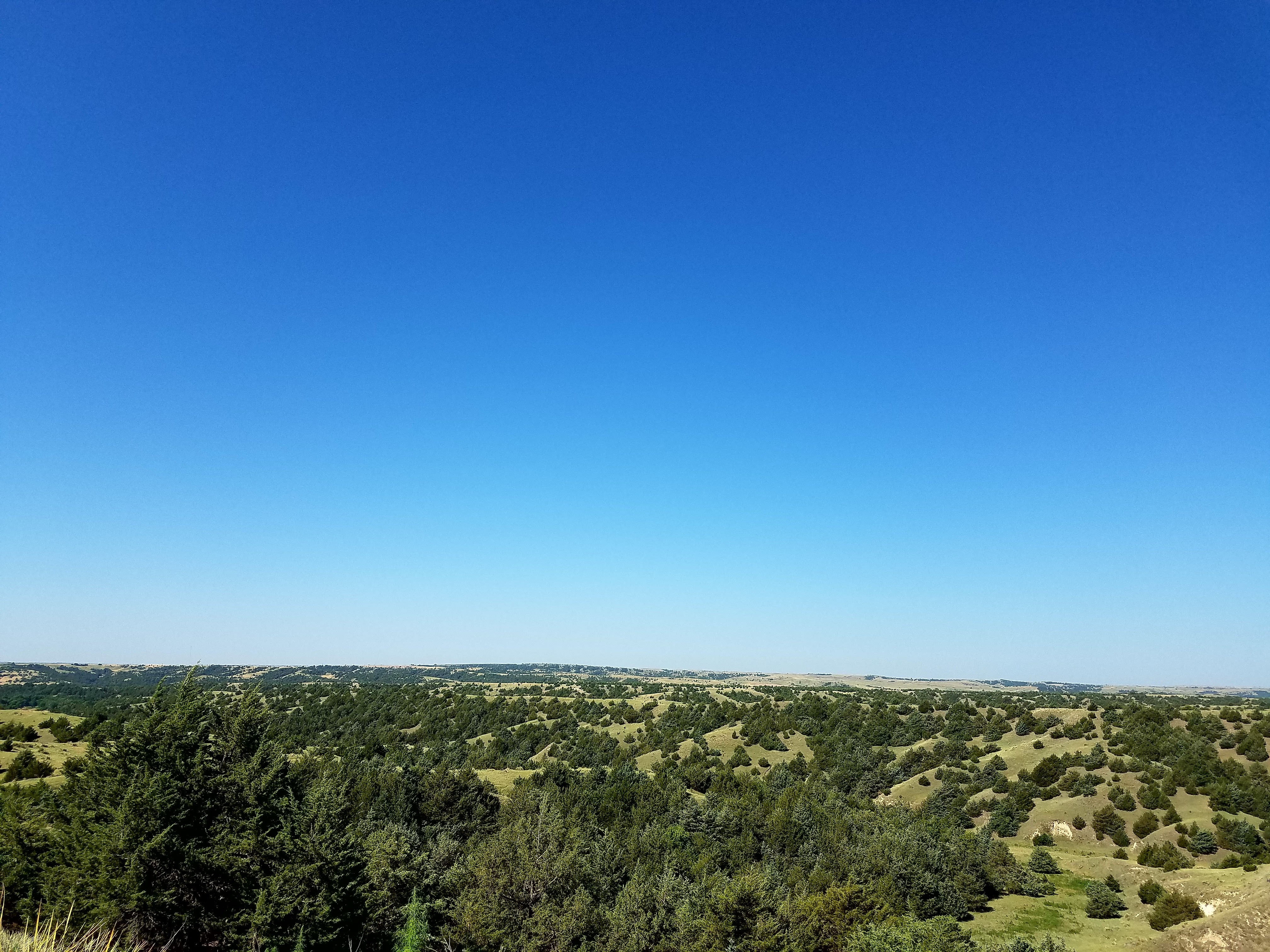
The invasive spread of eastern red cedar across Nebraska will continue as long as policy is mismatched with known science, University of Nebraska-Lincoln researchers have found. Without resolving the disconnect, grasslands will keep transitioning into cedar woodlands, a detriment to the state’s ecosystem services.
“We know red cedar causes a lot of problems,” said Caleb Roberts, an applied ecology graduate student and lead author on the study recently published in PLoS ONE. “But our management hasn’t caught up with it.”
Eastern red cedar has been identified as one of the major natural resources threats by the state-mandated Nebraska Invasive Species Advisory Council. Yet the researchers found state and federal agencies promoted eastern red cedar — planting 850,000 per year in Nebraska between 1925 and 2001, and 310,000 annually thereafter — while, at the same time, providing financial incentives to remove it.
This “doublethink” often is driven by opposing user needs, Roberts said, but also because science and policy have not yet identified how to handle native species valuable in some uses but invasive in others. Eastern red cedar, for example, serves well as a windbreak, but when unmanaged, overtakes and wipes out entire grassland areas, removes wildlife habitat, increases wildfire risk and collapses profitability of grass-fed beef enterprises.
“Prevention is the key to effectively deal with invasive species,” said Dirac Twidwell, assistant professor of agronomy and horticulture, who has studied juniper invasions across states in the Great Plains for more than a decade. “Policy for eastern red cedar has never addressed this issue, causing agencies to under-invest when the problem was preventable and over-invest later on to attempt to restore what was lost. There are no examples where this mentality has worked long term for eastern red cedar.”
In their study, the researchers examined three regions listed as priority for grassland conservation in Nebraska, which included the Sandhills, and analyzed eastern red cedar ground cover as well as the land management policies in place. They found eastern red cedar was planted and spread to regions where it used to be absent or rare, and that control measures were not put into place until the tree was rapidly expanding into grassland environments.
Prevention was not included in any of the policies.
“This is an example of how the actions of managers with seemingly similar goals, can contradict each other and lead to perverse outcomes,” said Craig Allen, director of the Nebraska Cooperative Fish and Wildlife Research Unit in the School of Natural Resources. “This policy assessment demonstrates how and why this can happen, and the consequences at risk for natural resources.”
To address the issue, the researchers made two recommendations:
Look to the Sage Grouse Initiative, a federally backed multi-state partnership, as an example. The group recently adopted new guidelines that incentivized control of eastern red cedar at earlier stages of invasion. Science has proven this approach is more cost effective and better at preventing adverse consequences of invasive species.
Follow the federal guidelines set for non-native invasive species. The policy requires agencies to minimize risks posed by invaders and only facilitate their use when they have determined that the benefits clearly outweigh potential damage.
“Nebraska’s grasslands are on the front lines of shifts from grasslands to juniper woodlands,” Roberts said. “We can possibly avert it if we match the policy with the science. We have a chance if we act quickly to make a difference.”
Co-authors include Allen, Roberts, Twidwell and Dan Uden, researcher with the Nebraska Cooperative Fish and Wildlife Research Unit.








